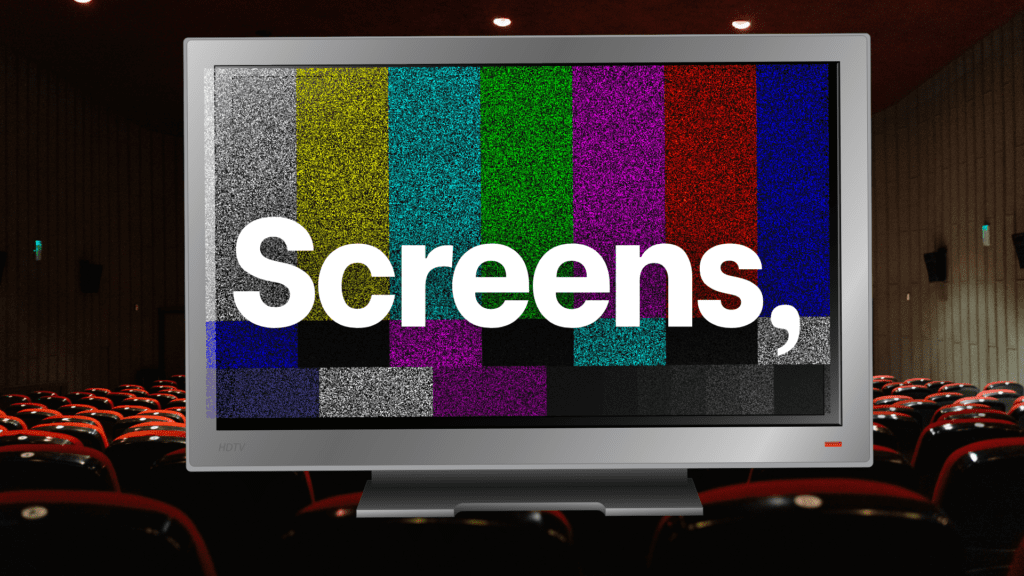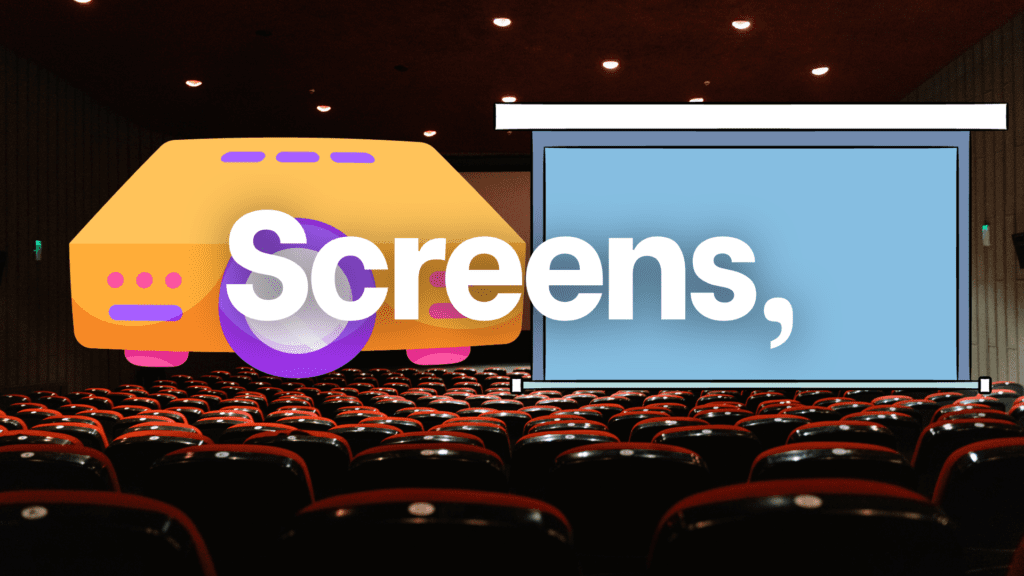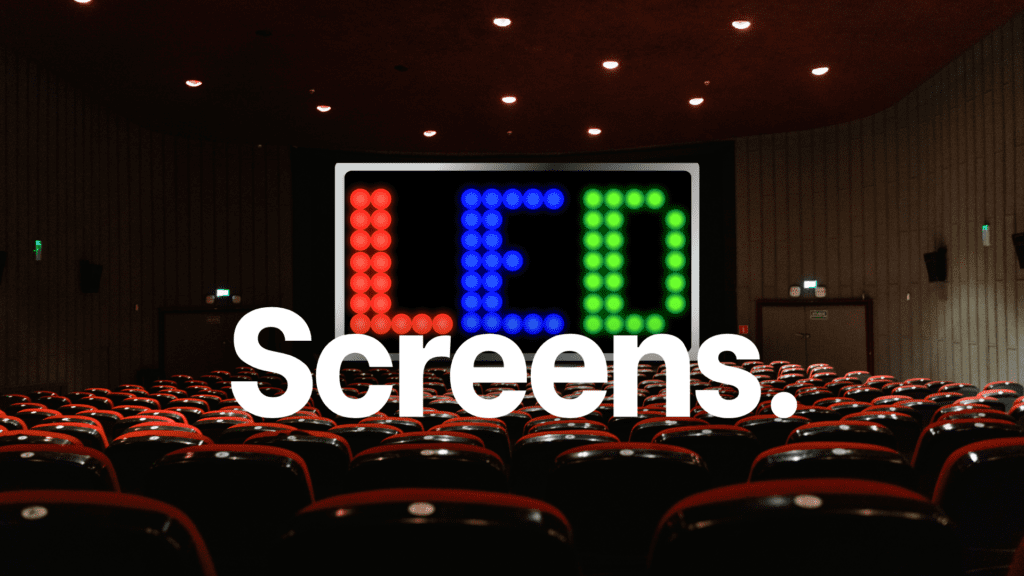A common conversation that I keep hearing is all about screens in church. What screen is best for my church? What do other people have, what are they upgrading to, what’s the most energy efficient option whilst being the most cost effective and future proof etc, etc, etc. If you’re looking at replacing what you currently have in your church then they are great questions to ask and you can have many a conversation with many different people with different opinions about them.
Without repeating too much of my previous blog, other questions you may wish to consider in the early stages of deciding what you are going to invest in include, what are you wanting to actually use them for – song words, videos, camera relay? How will they aid your mission as a church? Will the position of them enhance or detract from your service?
More practical questions to consider which will be important in helping you to decide what type of screen you want are where are you going to physically locate them? Do they need to be moveable? How much will it alter the look and fabric of the building (particularly important if you are part of a Church of England congregation)? How much power do they need and how will they get power if there are no power sockets conveniently located?With these questions in mind, there are three ‘types’ of screens that we can think about. TV screens, projector and screen, LED wall. Below I’m going to try and give you some pros and cons, and some things to consider when you are looking at the different options whilst trying to decide which type of screen is best for your church.

What type of screen…
TVs
TV screens are the most common replacements in a lot of churches these days. They are not necessarily as expensive as you might think for a decent sized screen. You can often get away with a smaller display size than you would if you were to use a projector and screen as the clarity of text etc is often a lot better. There are various mounting options for them, either a bracket mounted onto a wall, column/pillar etc. or various types of stands, with and without wheels, depending on your need and any particular look you may be going for. A lot of the screens you can purchase now are Smart TVs which opens up possibilities of using them easily with a youth group or other group to watch something on YouTube or stream music (all with the correct CCLI licence of course).Lots of screens these days are A-rated in energy efficiency too so they are great on your electricity bill and for the environment.
Downsides of the screens are each screen needs power so you will suddenly find yourself needing a lot more 13a (plug) sockets around your building. If they are something that you move in and out of a building each week, they can be quite fragile so you will need to find a way of protecting them well. Depending on the position of them they can quite drastically change the look of your building, and not always in a good way. Also on positioning, ideally you don’t want them in a place where there is a lot of footfall without any protection as again, they could get damaged easier than you would like.
What type of screen…
Projector and screen

Ten years ago a projector and screen was the most common way of displaying lyrics and Bible passages in a church that wasn’t just relying on hymn books and Bibles. They are still quite popular in churches today, although more and more ore being replaced by TVs. Even though this may actually feel like old technology now though, it is still a very valid option for a lot of places and requirements. One big projection screen can often be a better option than two TV screens. Again, there are various mounting options for both the screen and the projector. You can have a free standing screen and a pedestal for the projector. Mount both from the ceiling or on walls. You can get motorised or pull up/down screens if you don’t want them visible all the time. This is a plus on anyone not wanting to change the building aesthetic too much.
The problem with this option is that you can’t just put them up anywhere. There are two elements. You need to look at where you can mount both of these and from there work out what size image you would like and therefore what size screen, and then projector/lens etc. Projectors also need a bit of looking after. Even if you only use it for a couple of hours once a week, there are fans and filters in them that will need cleaning and most projectors still have lamps in them that will need replacing every so often. This can also turn into a more expensive option to both buy and run. The larger the image you want the larger the screen and projector so the more cost. Projectors aren’t necessarily the most energy efficient either. This is still a valid and elegant solution for a lot of scenarios though.

What type of screen…
LED Walls
LED walls have been around for a long time. Megachurches all over the USA are using them in their services, and they are slowly creeping into some Houses of Worship in the UK. Much like TV screens they are great for clarity of image without too much effort from a users part. As they are modular you can build them into different shapes and sizes depending on your requirements and within reason. They are portable,, but you will want proper cases to store and transport them in. They are most commonly built from the ground up with a lot of stage weights to weigh the frame down and stop it from toppling over once it is built. Background images and videos can look stunning on them..
My biggest but is for LED walls though. Cost, it costs a lot to buy and maintain. They vary in quality and resolution quite a lot. You need someone who knows what they are doing to set them up and operate them, they are not plug and play like the other two options, . They can be overbearing in a small space or if used badly. Beware of the ones coming out of China, some may not meet the safety standards we have in the UK however much they say they do (if you look at the back of a panel and the power inlet and outlet are the same colour, maybe walk away quite swiftly
What screen is best for your church is a question that you and your congregation need to think about together. Don’t discount something because it seems a bit old fashioned though. A projector and screen may be the best investment you make in a while.
